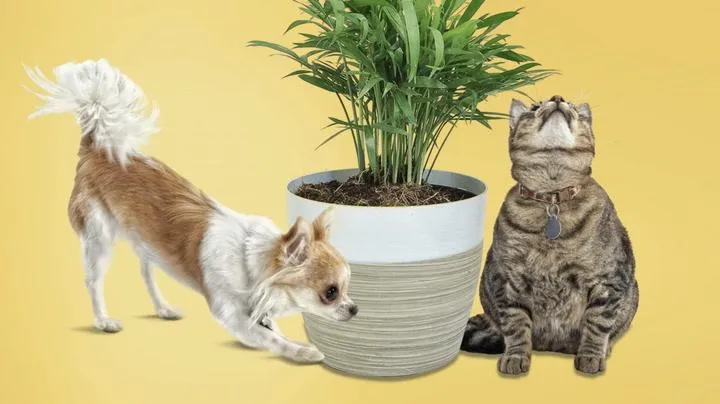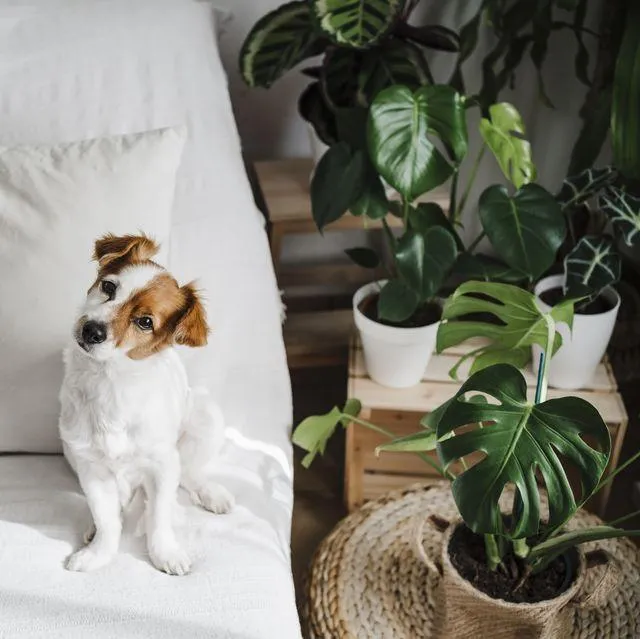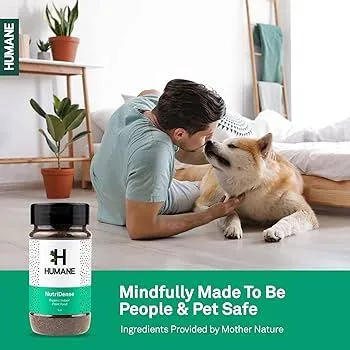Are Monstera Plants Safe to Have Around Pets?
The Monstera deliciosa, commonly known as the Swiss cheese plant or windowleaf, has become incredibly popular in recent years thanks to its tropical foliage and easy care requirements. However, many pet owners wonder if this trendy houseplant is safe to bring into a home with furry friends. In this article, I’ll explore the Monstera plant’s potential toxicity to cats and dogs and provide tips on keeping it pet-safe.
Monstera Toxicity Level
The good news is that Monstera is not considered highly toxic to pets. The American Society for the Prevention of Cruelty to Animals (ASPCA) lists it as “moderately toxic” to dogs and cats. This means ingesting large quantities could potentially cause mild to moderate gastrointestinal upset.
The foliage and fruits of a Monstera contain needle-like crystals called raphides which can irritate the mouth and cause excessive drooling or vomiting if eaten. Larger pets would likely need to consume a significant amount to experience more than mild discomfort.
Symptoms of Monstera Ingestion in Pets
- Excessive drooling
- Vomiting
- Diarrhea
- Mouth irritation
More severe poisoning is possible but uncommon. Keep in mind that smaller pets like cats may exhibit symptoms from ingesting smaller quantities than a larger dog.

Ways Pets May Access a Monstera Plant
There are a few main ways a curious pet could potentially access parts of a Monstera plant:
- Chewing or eating foliage, fruits, or stems they find on the floor or a low shelf
- Knocking a potted plant over and eating dirt or fragments on the floor
- Climbing furniture to reach higher plant parts
From my experience owning both plants and pets, it’s important to anticipate how an animal may interact with anything potentially hazardous in its environment.
Making a Monstera Pet-Safe
Luckily, there are some effective strategies for keeping a Monstera away from eager mouths while still allowing you to enjoy its lush foliage:
- Place plant out of reach. Mount it high on a wall or ceiling, or locate it on top of sturdy furniture.
- Secure pots. Heavy pots or mounting brackets can prevent knockovers. Suction cup feet work great for glass-top tables.
- Use barriers. Place the plant behind a screen, mesh, or in a closed nook to block access.
- Monitor pets. Supervise interactions, and don’t leave pets unattended in rooms with accessible plants.
With some prevention methods, a Monstera is perfectly compatible with most pet-friendly homes. Just take care to choose a display location pets can’t disturb.

Dealing with Possible Ingestion
Although unlikely with proper safety measures, what should you do if a pet does manage to consume part of a Monstera?
- Remain calm. Act promptly but without panic—this prevents stressing the pet further.
- Contact the vet. Call ahead as you transport the pet in for examination. They may induce vomiting or simply monitor.
- Note symptoms. Tell the vet exactly what, how much, and when the pet ingested to aid diagnosis. Stay until the pet’s stable.
In most cases, pets will tolerate small amounts with no treatment needed. Severe or prolonged symptoms may require fluids or medications. But generally prognosis is good with quick vet attention.
Alternative Plants Safer for Pets
If you have major concerns or an extremely curious pet, some lower-risk decorative plants to consider instead include:
- Snake plant
- Pothos
- Peace lily
- Philodendron
- Chinese evergreen
These houseplants pose minimal to no toxicity risk for pets and tolerate a variety of conditions. So go ahead and bring the outdoor indoors with botanical beauty that’s safe for the whole family.

With the right precautions tailored to your pet’s personality and habits, monstera plants could totally work for pet parents looking to liven up their living space. But play it safe by puppy-proofing or keeping potential hazards out of biting/scratching reach. What are your experiences keeping pets and plants together?
Monstera Care – Pet Friendly Factors
| Pet Type | Safety Level | Toxic Risks |
|---|---|---|
| Dogs | Moderate | Low, if ingested. Irritation possible if rubbed on skin. |
| Cats | Moderate | Low, if ingested. Irritation or vomiting possible if nibbled or played with. |
| Small pets | High | Toxic if ingested. Irritation possible from contact with skin or eyes. |
| Location | Moderate-High | Best out of reach of pets. May be chewed or knocked over by active pets. |
| Soil | Moderate | Wash hands after contact to avoid accidental ingestion by pets. |
FAQ
-
Is a monstera plant okay for pets?
Mostly yeah, a monstera is generally safe to have around pets. However, there are a couple things to look out for. The plant isn’t poisonous if eaten, but an animal chewing on the thick leaves or stem could possibly cause some minor mouth discomfort. Also, if a curious pet decides to nibble the new growth tips, it may stunt the plant’s upward growth. But otherwise, a monstera is usually fairly pet friendly.
-
Will my pets be bothered by a monstera plant?
It depends on the pet. Cats especially tend to view houseplants as toys to bat around or rest on top of. So a cat owner may need to monitor their furry friend around a new monstera addition. Dogs are less likely to mess with the plant unless they’ve got a history of chewing houseplants. Small animals like hamsters or birds should not be an issue. Some pets seem to ignore houseplants completely. So test your pet’s reaction at first before fully trusting them together pet-free.
-
How can I deter my pet from a monstera?
If Fido keeps nosing at the monstera leaves, there are a few steps to try redirecting his interest. You can spray the plant with citrus-scented pet repellent to make it unattractive. Place the pot up high, maybe on a tall shelf or hanging planter out of normal pet reach. Consider bitter apple spray or hot sauce on leaves as a temporary deterrent. And make sure your pet has plenty of their own toys to chew on as an alternative. With some modifications, you have a good chance of saving the plant from pet damage.

-
Do monsters need extra care with pets around?
Kinda, yes. Having a pet in the home does mean being more careful with plant care. Check leaves and stems regularly for teeth marks or other signs a curious pet sampled the monstera. Give the plant a quick inspection after your pet has been nearby unattended. You may need to water less often to prevent pooled water that could be drank. And trim any drooping or fallen leaves right away before Fido decides it’s a snack. Other than a little more vigilance, normal monstera care should still apply with pets in the mix.
-
What plants are best if you have pets?
Some plants that tend to fare better with pets around include spider plants, pothos, peace lilies, english ivy and snake plants. These are generally considered non-toxic and less enticing for most pets to mess with. Spider plants have a naturalCatnip and other herbal plants provide safe nibbling options. Succulents are another wise choice since their thick leaves and stems aren’t as easily crushed by curious paws. Vegetable gardens can keep pets amused and their owner fed too. With the right plant picks matching your pets, houseplant and gardening fun can coexist peacefully.
-
Any tips for introducing a new plant with pets around?
When bringing home a new plant like a monstera, go slow with pets close by. Keep an eye on early interactions and watch for signs of interest, good or bad. Consider bringing a small “peace offering” treat just for your furry friend as the plant comes in. This can build positive associations. Give pets a verbal “leave it” cue when they start to inspect. Praise and reward calm behavior around plants with affection. Over time, they’ll learn houseplants aren’t chew toys. It’s best to thoroughly pet-proof new additions until routines are established.
